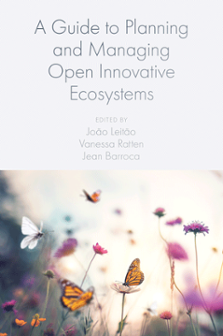
Index
A Guide to Planning and Managing Open Innovative Ecosystems
ISBN: 978-1-78973-410-2, eISBN: 978-1-78973-409-6
Publication date: 16 October 2020
Citation
(2020), "Index", Leitão, J., Ratten, V. and Barroca, J. (Ed.) A Guide to Planning and Managing Open Innovative Ecosystems, Emerald Publishing Limited, Leeds, pp. 185-189. https://doi.org/10.1108/978-1-78973-409-620201013
Publisher
:Emerald Publishing Limited
Copyright © 2020 Emerald Publishing Limited
INDEX
Index
- Prelims
- Chapter 1: Planning and Managing Open Innovative Ecosystems, Data and Government
- Chapter 2: Understanding Bio Health Technologies Entrepreneurial Ecosystems: An Intellectual Capital Approach
- Chapter 3: Transformative University in Quadruple Helix Sustainability Governance
- Chapter 4: Entrepreneurship and University Brands: The Sense of Belonging in Higher Education
- Chapter 5: Business Concept in a Health-related Donation Context
- Chapter 6: Empowerment and Performance in SMEs: Examining the Effect of Employees’ Ethical Values and Emotional Intelligence
- Chapter 7: Technology Ecosystems in Sport: A Bibliometric Analysis
- Chapter 8: International Sports Organizations and Internationalization of Sports Firms
- Chapter 9: Traditional Cultural Industry in Jepara: An Open Innovative Ecosystem Approach
- Chapter 10: An Education Ecosystem View to Managing Ethics and Entrepreneurial Intention
- Chapter 11: State-owned Companies and Innovative Ecosystem: A Case of 3-kg LPG
- Index